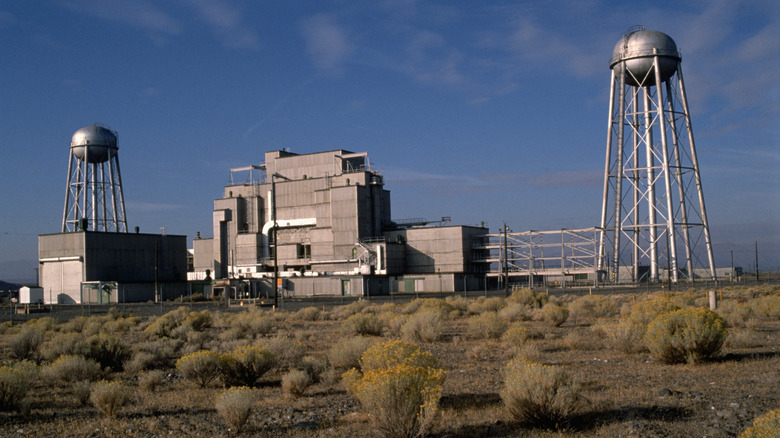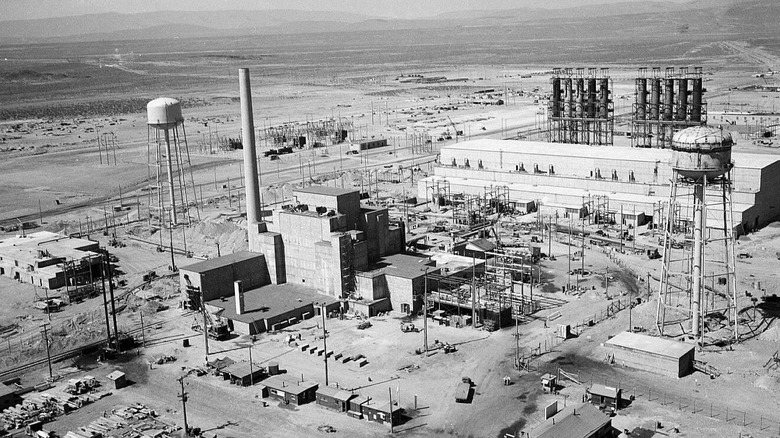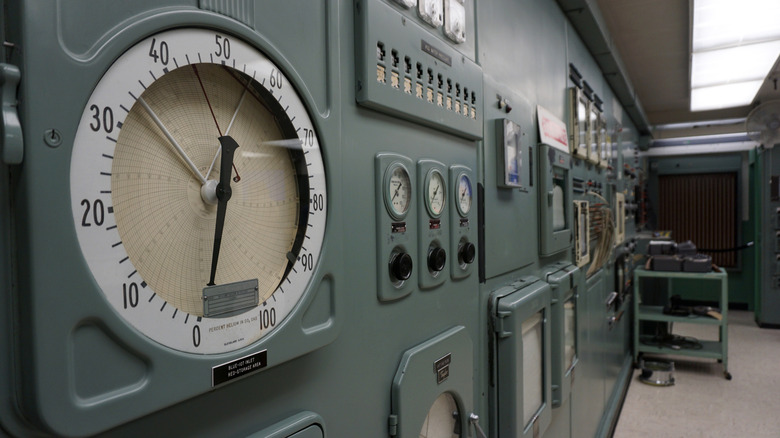Situated Between Portland And Seattle Is A Historic Nuclear Reactor You Can Tour For Free
Washington State is home to some of the Pacific Northwest's most intriguing destinations. You could visit Snoqualmie, a picturesque city where the late David Lynch's "Twin Peaks" was filmed, or relax in the Carson Hot Springs Resort, a historic hot springs resort in the Columbia River Gorge. But perhaps one of its most fascinating landmarks is Hanford, Washington, one of three sites included in the Manhattan Project National Historical Park.
Hanford's B Reactor holds a unique place in history as the world's first full-scale nuclear reactor. Built during World War II, this groundbreaking facility was part of the Manhattan Project, the top-secret effort to develop the first atomic bomb. Located about halfway between Portland and Seattle, Hanford's remote location made it ideal for such a sensitive mission. Today, visitors of all ages can tour this landmark for free, offering a rare glimpse into the science and history behind one of the 20th century's most significant — and consequential — achievements.
The B Reactor that made history
Construction of the B Reactor began in 1943, when Hanford was selected for its proximity to the Columbia River and isolation from major population centers. The river was a vital resource, supplying the cold water needed to keep the nuclear reactor cool. This innovation was central to the Manhattan Project. The B Reactor became the first facility capable of producing weapons-grade plutonium on an industrial scale for nuclear bombs.
Plutonium is a radioactive element created by bombarding uranium in the reactor's fuel channels. At its peak, around 45,000 workers labored at the Hanford Site to extract enough plutonium for a bomb, using over 2,000 aluminum-lined nuclear fuel channels. The plutonium produced here was first used in the Trinity test, the first atomic bomb detonation, in July 1945. Just weeks later, the same material powered the bomb dropped on Nagasaki, Japan, contributing to the end of World War II. Though the reactor ceased operations in 1968, it was designated a National Historic Landmark in 2008, serving as a testament to the ingenuity — and the moral complexities — of this transformative period in history, which you can learn about on a free tour.
A visit to the Hanford Site
Guided tours of the B Reactor begin at the Hanford Visitor Center in Richland, Washington, with a 4-hour time commitment. After a 45-minute bus ride to the site, you'll arrive at the reactor's remote desert location. Along the way, knowledgeable docents provide context about the reactor's role in World War II and its scientific significance. Food and drinks (other than water) are prohibited on-site, but cameras and phones are welcome.
Once at the reactor, prepare to be awestruck by its scale and complexity. The reactor itself is a grid of 46 rows of fuel tubes, a feat of 1940s engineering. Any lingering fears of radioactivity are quickly dispelled — as Colleen French, a program manager of the park, said in The Seattle Times, "Since the tours began in 2009, there never has been any radioactivity measured on those dosimeters." The tour continues through various rooms, including the reactor's valve pit, before culminating in the control room. With its sea-green walls, vintage instrumentation, and thousands of tiny lights, the control room feels like stepping into a retro-futuristic time capsule.
Also at the Hanford Site, the LIGO Exploration Center, established in the 1990s, focuses on detecting gravitational waves and studying cosmic phenomena like black holes. This facility has exhibits about cutting-edge astronomy, also free to the public. The Hanford Visitor Center, your contact point for B Reactor tours, is a great resource for exploring the broader Tri-Cities area. For those extending their Washington adventure, consider heading westward to Seattle's futuristic indoor jungle, an otherworldly experience to round out your sci-fi-inspired trip.


